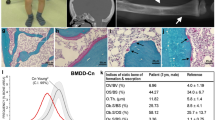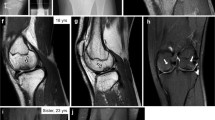Abstract
COLLAGEN is the major extracellular protein of the body, and forms the fibres which impart tensile strength to all of its structural elements, including skin, bone, tendon and cartilage. It occurs as a family of molecules with closely related structures but distinctive tissue distributions1. Four types have been described with varying degrees of precision; the most abundant and best studied (type I) is a heteropolymer of three polypeptides, two identical (α1(I)), and a third (α2(I)) which differs slightly in primary structure. Types II-IV are homopolymers of the general formula (α1(X))3, where the designation α1 reflects the close sequence homologies shared with α1(I), although this relationship is only tentative in the case of α1(IV). These collagens are probably the products of at least five non-allelic structural genes, and knowledge of their linkage would be useful in view of their possible origin by duplication and divergence from an ancestral collagen gene. Quantitative variations in the expression of these genes are important in normal tissue development, and defective expression has been implied in two inherited disorders, Ehlers-Danlos IV2 and osteogenesis imperfecta3. The chromosomal assignment of these structural genes is a first step towards discovering their linkage relationship and perhaps towards understanding more about their differential expression. Because collagen is readily synthesised by cells in vitro, the problem of chromosome assignments may be investigated by the techniques of somatic cell genetics. When mouse and human cells are fused, random loss of human chromosomes occur, while the full set of mouse chromosomes is usually retained. Assignment of a gene to the chromosome carrying it can be achieved by examining sets of hybrids for expression of the human gene product and ascertaining the segregation of this phenotype with a particular human chromosome. We have examined a series of human–mouse hybrid clones for the production of collagen and report here the consistent segregation of human collagen with human chromosome 7.
This is a preview of subscription content, access via your institution
Access options
Subscribe to this journal
Receive 51 print issues and online access
$199.00 per year
only $3.90 per issue
Buy this article
- Purchase on Springer Link
- Instant access to full article PDF
Prices may be subject to local taxes which are calculated during checkout
Similar content being viewed by others
References
Piez, K. A. in Biochemistry of Collagen (eds Ramachandran, G. N. & Reddi, A. H.) 1–44 (Plenum, New York, 1976).
Pope, F. M. et al. Proc. natn. Acad. Sci. U.S.A. 72, 1314–1316 (1975).
Sykes, B. C., Francis, M. J. O. & Smith, R. New Engl. J. Med. 296, 1200–1213 (1977).
Piez, K. A., Eigner, E. A. & Lewis, M. S. Biochemistry 2, 58–66 (1963).
Chidlow, J. W., Bourne, F. J. & Bailey, A. J. FEBS Lett. 41, 248 (1974).
Biel, W., Timpl, R. & Furthmayr Immunology 24, 13–24 (1973).
Solomon, E. et al. Somatic Cell Genet. 2, 125–140 (1976).
Swallow, D. M., Solomon, E. & Pajunen, L. Cytogenet. Cell Genet. 18, 136–148 (1976).
Croce, C. M. & Koprowski, H. J. exp. Med. 140, 1221–1229 (1974).
Bobrow, M. & Cross, J. Nature 251, 77–79 (1974).
Author information
Authors and Affiliations
Rights and permissions
About this article
Cite this article
SYKES, B., SOLOMON, E. Assignment of a type I collagen structural gene to human chromosome 7. Nature 272, 548–549 (1978). https://doi.org/10.1038/272548a0
Received:
Accepted:
Issue Date:
DOI: https://doi.org/10.1038/272548a0
This article is cited by
-
Gene for?2(I) collagen is on mouse chromosome 6 not 16
Somatic Cell and Molecular Genetics (1989)
-
Biochemical and genetic analysis of the Oka blood group antigen
Immunogenetics (1988)
-
The human T-cell receptor α-chain gene maps to chromosome 14
Nature (1985)
-
Regional chromosome mapping of human collagen genes alpha 2(I) and alpha 1(I) (COLIA2 and COLIA1)
Human Genetics (1985)
-
Internal deletion in a collagen gene in a perinatal lethal form of osteogenesis imperfecta
Nature (1983)
Comments
By submitting a comment you agree to abide by our Terms and Community Guidelines. If you find something abusive or that does not comply with our terms or guidelines please flag it as inappropriate.



